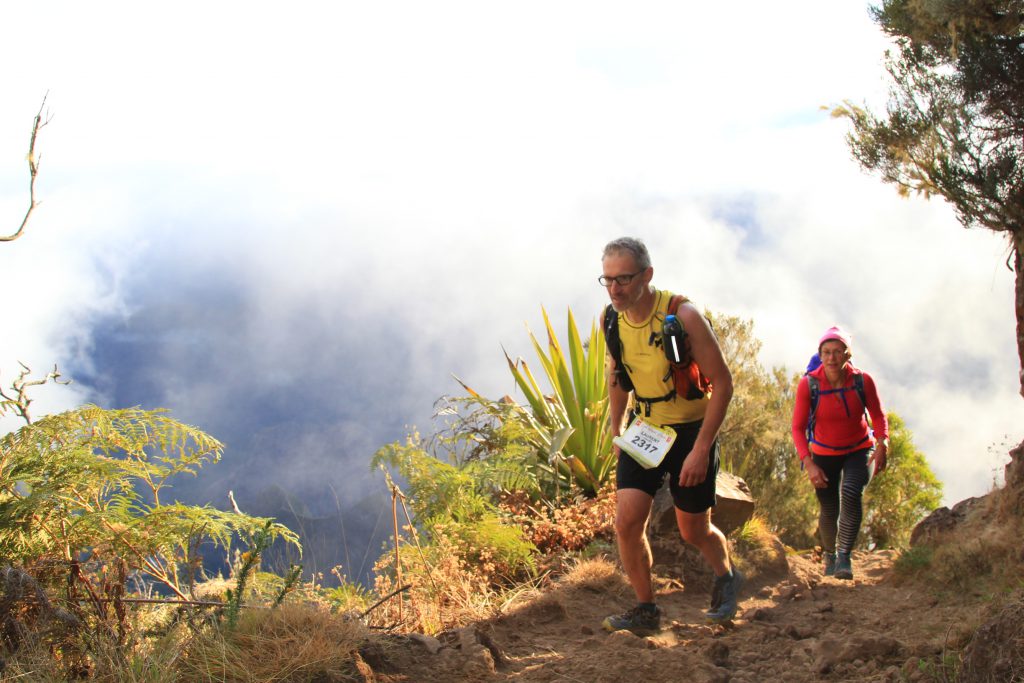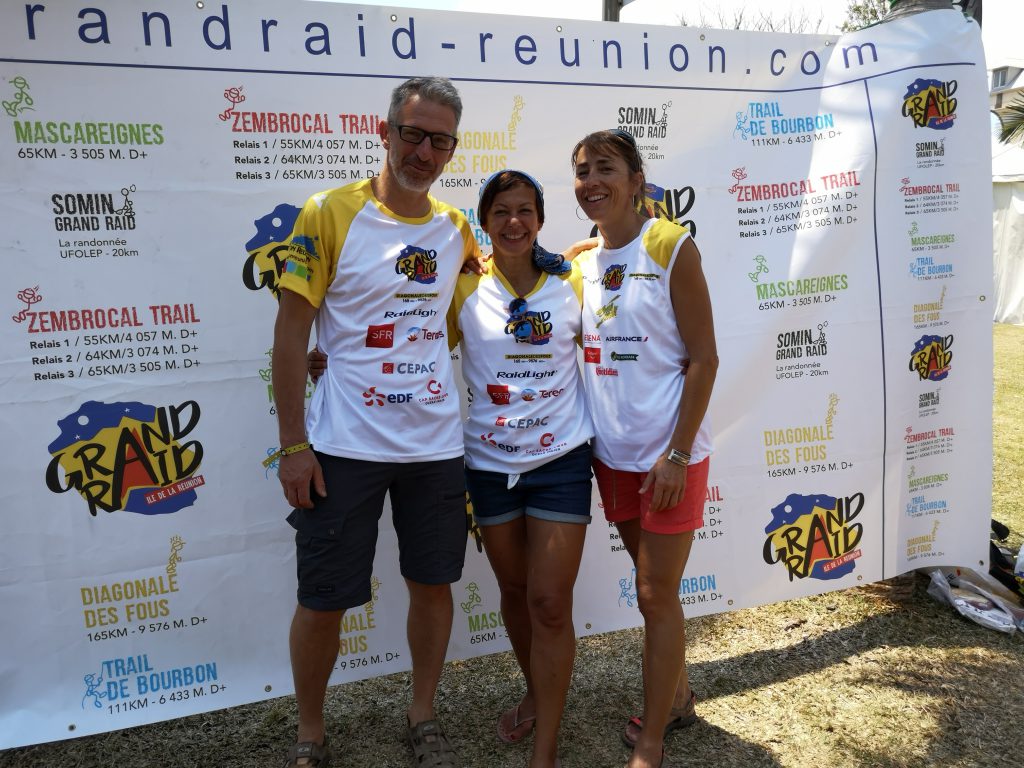Two athletes, two stories: coaching on one of the most demanding race courses in the world – at the Grand Raid, a distance of 100 miles (165 km) and more than 31,000 feet (9,600 m) of climbing will make runners go to the limits of their capacity.
Crazy? Admirable? Opinions differ when I mention the “Grand Raid – Diagonales des Fous” on La Réunion, where my job was to support two extreme runners on their way across the mountains. The “Madmen’s Diagonal” is a 100-mile (165-km) run featuring more than 31,000 feet (9,600 m) of climbing. Why the hell do people do this? What is their motivation?
When I met my two coachees from Toulouse, I asked them these questions. For how should I see to their mental needs on this race course if I didn’t know what spurs them on? The answers they gave were similar: they wanted to get to know and experience their own limits, reassure themselves that they could manage to go on in spite of physical exhaustion, that, with mental strength, they could push the envelope still a little farther if they didn’t give up. Such a run is a lifetime experience, providing knowledge to cope with many other challenges in life.
What a dream island! La Réunion is located right in the middle of the Indian Ocean, surrounded by sharks. Another reason for my two athletes: exploring new landscapes and exploring them differently, i.e., by running. My task on the island: apart from providing a change of clothes, I was responsible for words of encouragement. Indeed, mental support and motivation were most essential. Yet, how do you know whether someone can still go on or had actually better stop? I was supposed to find out by running with them again and again for a few miles, just being at their side and finding the right words.

To me, it was adventure and responsibility at the same time: driving through the mountains at night using a map (as in the old days) rather than GPS navigation – mountains that rise up almost vertically and are definitely impassable in the rainy season; finding the right place in the darkness; sleeping in the back seat of the car to arrive punctually at the checkpoint where we wanted to meet in the morning. Nothing would have been worse than missing the two runners. So I criss-crossed the island by car and – like my coachees – I hardly slept for three nights.
How does someone feel who has to give up after 60 miles (or 100 km) because he has incurred a foot injury which is so bad that to continue the race is out of the question? How does one deal with the feeling of not having succeeded? Most people would say, “Wow, 60 miles and plenty of climbing in addition – that is absolutely fabulous!” However, a runner who doesn’t make it to the finish thinks differently. He is extremely frustrated. What is important now is to put things in perspective, rearranging them in the runner’s head and in his heart. What do I gain from that experience? What does it mean to me and what can I learn? What counts is how one copes with such experiences and, especially, with failures.

And how does one feel, if one crosses the finish line eight hours later than the intended finishing time, i.e., after 50 hours rather than after 42 hours? That is what happened to my second candidate. Luckily, he still found plenty of pleasure in his achievement, was extremely happy and very proud. And I? I, too, was very happy and very pleased, because my principal concern was that he should be safe when running across the finish line. Did I say “running”? No, he was actually floating across. What a wonderful moment for everybody involved!

There is hardly a dance that can boast the improvisation potential of an Argentine tango. Here, the leader shows where he wants to go and, at the same time, empathetically engages with his partner.
He (or she) who wishes to learn how to lead or is pondering what leadership actually means, should try out dancing the Argentine tango. For there is hardly a better way to explain the concept of leadership than with this dance metaphor. That impression is confirmed whenever I slip into my tango shoes to conquer the dance floor together with my partner.
So why is the Argentine tango such a good metaphor? It is here that both partners need to sense what the other wants. The idea is for each partner to listen with their body to their partner’s needs. The Argentine tango calls for plenty of creative and communicative interaction – filled as it is with steps and movements that come into being through mutual improvisation. Just as in real life, the dancers have to respond, develop ideas, find solutions whenever something unforeseen happens.
Dancing the Argentine tango, you will, again and again, discover new figures and common pathways – even with a relatively small repertoire of steps and movements. In business jargon, this could be referred to as a “toolbox”: a set of devices used to respond flexibly to different situations. Such a procedure presupposes that the partners listen to each other, ideally sensing – or even knowing – the other’s next step rather than just dancing away.
Apart from listening with their bodies, the partners need to sort out the respective roles. If you decide to lead, you need to know the way. You need an attitude and posture that the other can understand and sense. Those who wish to lead, whether in a company or on the dance floor, have to rest in themselves, developing an inner attitude that shows the way. Only then can the partner know which step to make next and which figure to dance. Only then can both partners trust each other. Dancing is a dialogue where you sense what the other wants. Yet, at the same time, you can rest completely in yourself at every single moment.
A good, a decisive tango dancer is the ideal leader. Good leaders do not try to convince their employees of anything, without listening to them beforehand. For disregard is the best way to lose those that are supposed to follow you. Good dancers rest in themselves and still send signals that can easily be understood. If they then dance also with enthusiasm, they can be sure of a trusting partner who will do what they want them to do.